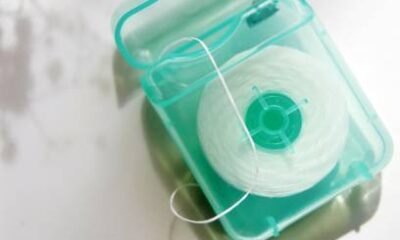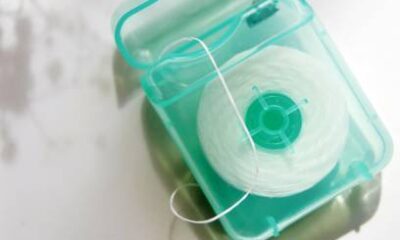Top Stories
Dental Floss Paves Way for Innovative Vaccine Delivery Method
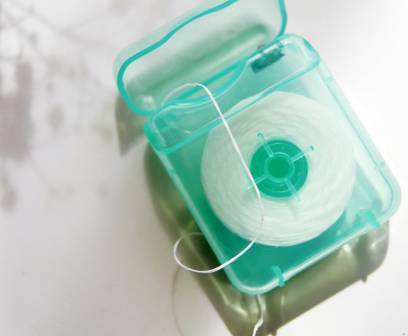
Research published in the journal Nature Biomedical Engineering reveals that dental floss could emerge as a novel method for vaccine delivery. Scientists have demonstrated that floss, when coated with vaccine components, can effectively introduce immunity to serious diseases, such as influenza. The study, led by researchers at the University of Auckland, suggests that this approach may one day transform public health strategies.
In a series of experiments, researchers utilized dental floss coated with either proteins or inactive viruses. They gently inserted it between the gums of mice, taking advantage of the highly absorbent tissue rich in immune cells. This process required precision, as one scientist delicately opened each mouse’s mouth using a keyring while another maneuvered the floss between their tiny teeth. This challenging procedure was performed every two weeks for a month, after which the mice were exposed to a lethal strain of the flu virus.
The results were striking. All vaccinated mice survived the exposure, while the unvaccinated group did not. The vaccinated mice exhibited flu antibodies not only in their saliva but also in their faeces and bone marrow, indicating a robust and lasting immune response. Additionally, researchers observed an increase in infection-fighting T cells in the lungs and spleen, highlighting the effectiveness of this innovative delivery method.
To evaluate the feasibility of this technique in humans, the team conducted a smaller trial involving 27 healthy volunteers. Participants were given dental floss picks dipped in harmless food dye. The dye successfully reached the gum tissue approximately 60 percent of the time, suggesting that the concept is viable with further refinement.
The implications of dental floss as a vaccination tool could address several significant challenges in public health. For one, it provides a needle-free alternative, which could benefit individuals with a fear of injections. Additionally, unlike many traditional vaccines, those delivered via floss may not require cold storage, allowing for easier distribution. This could lead to scenarios where vaccines are mailed directly to individuals, promoting greater accessibility.
Furthermore, during global health crises such as pandemics, this delivery method could facilitate quicker immunization efforts, reaching more people in less time.
While there remains substantial research ahead before dental floss replaces conventional flu vaccinations, this study opens up exciting possibilities for the future of painless and practical vaccine delivery. With the potential to make immunization more accessible, the innovative use of dental floss could significantly enhance public health responses worldwide.
Top Stories
Dental Floss: A Revolutionary Method for Vaccine Delivery?
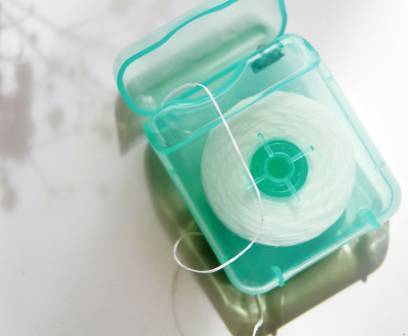
Research published in the journal Nature Biomedical Engineering suggests that dental floss could play a pivotal role in the future of vaccine delivery. A team of scientists conducted an experiment where dental floss, coated with vaccine components like proteins or inactive viruses, was used to immunize mice against the flu. The initial findings indicate that this method may offer a novel approach to providing immunity without the need for needles.
The experiment involved carefully maneuvering the floss between the gums of mice, which are rich in absorbent tissue and immune cells. This unique location allows for a more effective response to viral threats. To carry out the procedure, researchers employed a keyring to open the mouths of the mice while another team member inserted the floss. This process took place every two weeks over a month.
After the final flossing, the vaccinated mice were exposed to a lethal strain of the flu virus. Remarkably, every mouse that received the vaccine via dental floss survived the exposure, while those that did not receive the treatment did not survive. Further analysis revealed that the vaccinated mice developed flu antibodies not only in their saliva but also in their faeces and bone marrow, indicating a strong and long-lasting immune response.
Potential Human Applications
To explore the feasibility of this method in humans, researchers conducted a small trial involving 27 healthy volunteers. Participants used dental floss picks dipped in harmless food dye, which successfully reached the gum tissue approximately 60 percent of the time. This promising result suggests that flossing could be a viable method for delivering vaccines with further refinement.
This floss-based delivery system presents several significant advantages. It is needle-free, which is beneficial for individuals who experience anxiety related to injections. Additionally, unlike many traditional vaccines that require cold storage, these vaccines could remain stable at room temperature, facilitating easier distribution. The concept of receiving vaccines through the mail, allowing individuals to “floss their way to immunity,” could revolutionize how vaccines are administered, particularly during outbreaks when rapid distribution is critical.
While these findings are encouraging, it is important to note that more research is necessary before this innovative method can replace traditional vaccination techniques. Nonetheless, the study opens up exciting possibilities for developing painless, practical, and more accessible vaccines in the future.
Dr. Michelle Dickinson, a nanotechnologist involved in the research, has highlighted the groundbreaking nature of these findings. As scientists continue to explore the potential of dental floss as a delivery system, the future of vaccination may very well be on the cusp of a significant transformation.
Top Stories
Scientists Explore Dental Floss as a Novel Vaccine Delivery Method
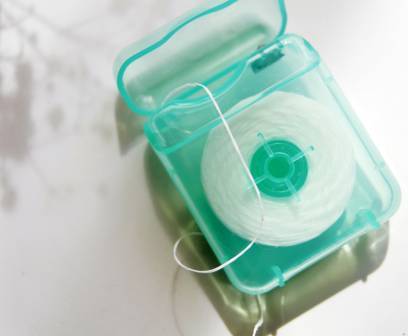
Research published in the journal Nature Biomedical Engineering reveals that dental floss could potentially serve as a method for vaccine delivery. A team of scientists conducted an experiment where they coated dental floss with vaccine components, such as proteins or inactive viruses, and utilized it to deliver these substances directly into the gums of mice. The study indicates that this unconventional approach may pave the way for a new means of immunization.
The experiment involved carefully flossing the teeth of mice, a task that required significant precision. One researcher used a keyring to gently open each mouse’s mouth, while another maneuvered the floss between the animals’ tiny teeth every two weeks over a month. Following the final session of flossing, the mice were exposed to a lethal strain of the flu virus. Remarkably, every mouse that received the floss treatment survived, while those that did not participate in the flossing did not survive.
The results of this study demonstrated a robust immune response among the vaccinated mice. Not only did they develop flu antibodies in their saliva, but these antibodies were also found in their faeces and bone marrow, indicating a strong and lasting immune reaction. Furthermore, there was a notable increase in the number of infection-fighting T cells in the lungs and spleen of the vaccinated subjects.
To assess the feasibility of this approach in humans, researchers conducted a preliminary test involving 27 healthy volunteers. Participants used dental floss picks coated in harmless food dye. The results showed that the dye reached the gum tissue approximately 60 percent of the time, suggesting that the method may be viable with further refinement.
The implications of this research are significant. A floss-based vaccine delivery system could provide several advantages, including eliminating the need for needles, which would benefit individuals with a fear of injections. Additionally, these vaccines could potentially be stable at room temperature, removing the necessity for cold storage that many traditional vaccines require. This characteristic could greatly facilitate distribution, making it possible for vaccines to be delivered by mail, allowing individuals to administer them at home.
Moreover, during outbreaks or pandemics, such a straightforward delivery method could help reach more people quickly and efficiently. While there remains considerable work to be done before dental floss can replace conventional flu vaccinations, this research opens up exciting possibilities for developing less invasive, more practical, and accessible vaccines in the future.
As scientists continue to explore innovative solutions to improve immunization methods, the potential for everyday products like dental floss to play a role in public health is both intriguing and promising.
Top Stories
Dental Floss Paves New Path for Vaccine Delivery Research
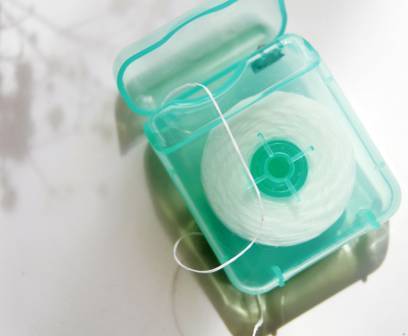
Research published in the journal Nature Biomedical Engineering reveals a groundbreaking approach to vaccine delivery using dental floss. Scientists have discovered that floss could potentially be adapted to administer vaccines, offering a needle-free alternative to traditional methods. This innovative concept poses a significant shift in how vaccinations may be approached in the future.
In a recent experiment, researchers utilized dental floss coated with vaccine components, including proteins and inactive viruses, to test its efficacy in mice. The study focused on the soft tissue between the teeth, which is rich in immune cells and highly absorbent, making it an ideal site for the body to detect and respond to viral threats. The unique nature of this delivery method was put to the test as researchers faced the challenge of flossing mice, employing a keyring to gently open their mouths and maneuver the floss between their tiny teeth. This process was repeated every two weeks over the course of a month.
The results of the study were remarkable. Following the final flossing session, the mice were exposed to a lethal strain of the flu virus. All of the vaccinated mice survived, while those that did not receive the floss treatment perished. Additionally, the vaccinated mice exhibited flu antibodies not only in their saliva but also in their faeces and bone marrow, indicating a robust and lasting immune response. Researchers also noted a significant increase in the number of infection-fighting T cells in the lungs and spleen of the vaccinated subjects.
To explore the feasibility of this method in humans, researchers conducted a trial with 27 healthy volunteers. Participants used dental floss picks dipped in harmless food dye. The results indicated that the dye reached the gum tissue approximately 60 percent of the time, suggesting that, with further refinement, this method might be viable for vaccine delivery.
The implications of floss-based vaccine delivery are considerable. This method offers several advantages over traditional vaccines. For instance, it is needle-free, which could ease the anxiety of individuals with a fear of needles. Furthermore, unlike many conventional vaccines, which require cold storage, these floss-delivered vaccines could potentially remain stable at room temperature. This feature could facilitate easier distribution, enabling vaccines to be sent directly to individuals via mail, thereby enhancing accessibility.
Additionally, during pandemics or outbreaks, this simple and effective delivery method could help reach larger populations more rapidly. While there remains significant work to be done before dental floss becomes a standard method for delivering vaccines, the findings of this research open up exciting possibilities for more practical and accessible vaccination options in the future.
Dr. Michelle Dickinson, a prominent nanotechnologist involved in the research, emphasized the potential of this innovative approach. The study not only highlights the intersection of nanotechnology and immunology but also provides a glimpse into the future of vaccine distribution, where convenience and efficacy coexist. As scientists continue to explore this novel avenue, the hope is that dental floss could one day play a crucial role in public health initiatives worldwide.
Top Stories
Bakery Owners Flee New Zealand Amid Debt Claims, Leaving Trail of Unpaid Bills

Veronica and Didier Crevecoeur, the couple behind the French bakery Le Posh, have reportedly left New Zealand unexpectedly, amid allegations of significant financial misconduct. An acquaintance of the couple revealed that they appeared to abandon their home, leaving behind personal belongings, including a collection of souvenir bells amassed over 40 years. Their sudden departure has raised questions about their financial dealings in the country.
The couple faced a civil claim concerning unpaid rent for commercial premises in Nelson, which has unveiled a complex web of debt. In June, the Nelson District Court ordered the Crevecoeurs to pay over $29,000 in unpaid rent, damages, and legal costs to the owners of the building that housed their bakery. This legal judgment highlights the couple’s failure to fulfil their financial obligations since arriving in New Zealand around 2018.
Trail of Debt and Deceit
Reports from NZME indicate that the Crevecoeurs’ departure is not the first instance of financial distress linked to their business operations. Multiple individuals have come forward, claiming they were also left with unpaid debts after engaging in transactions with the couple. These allegations paint a troubling picture of the bakery’s financial health and raise concerns about the couple’s integrity as business owners.
While the exact circumstances of their exit remain unclear, the sudden nature of their departure has left former associates and patrons bewildered. The couple’s decision to leave behind their belongings suggests a hurried escape, leading to speculation about their intentions and future plans.
Impact on the Community
The closure of Le Posh has not only affected the Crevecoeurs but has also had repercussions for local suppliers and customers who frequented the bakery. Community members have expressed disappointment over the loss of a French culinary staple, which contributed to the local food scene. Many are left wondering about the financial stability of other businesses in the area, as the incident exposes potential vulnerabilities in local commerce.
As investigations continue into the Crevecoeurs’ financial activities, the implications of their departure could extend beyond just their bakery. The community’s trust in local businesses may be challenged, prompting discussions about better protections for consumers and stricter regulations for business practices.
In the wake of this unfolding situation, it remains essential for local authorities to monitor the impacts on the community and ensure that similar situations do not arise in the future. As more details emerge, the story of the Crevecoeurs serves as a cautionary tale for both entrepreneurs and consumers alike.
-

 Politics2 weeks ago
Politics2 weeks agoDavid Seymour Proposes Fast-Track Law for New Supermarkets in NZ
-

 Entertainment2 weeks ago
Entertainment2 weeks agoGeorge Calombaris Opens Up About Alcohol Struggles After Scandals
-

 Top Stories2 weeks ago
Top Stories2 weeks agoTragic Crash Claims Three Lives on Masters Rd Near Waiuku
-

 World2 weeks ago
World2 weeks agoDaughter Accused of Murdering Mother in Khandallah Home
-

 World2 weeks ago
World2 weeks agoCoalition Leaders Address UN Rapporteur’s Criticism, Clarify Response
-

 World2 weeks ago
World2 weeks agoKalyn Ponga Explores Future Options Amid Newcastle Knights Struggles
-

 World2 weeks ago
World2 weeks agoDriver High on Magic Mushrooms Crashes with Child in Car
-

 Top Stories2 weeks ago
Top Stories2 weeks agoTauranga Airline Suspended After Safety Concerns Arise
-
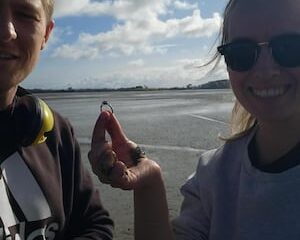
 Health2 weeks ago
Health2 weeks agoWoman’s Missing Engagement Ring Found in Waiuku Mudflats
-

 Business2 weeks ago
Business2 weeks agoSouth Waikato Trades Training Centre Faces Closure Proposal
-

 World2 weeks ago
World2 weeks agoQueenstown’s The Rees Hotel Fined $22,000 for Illegal Crayfish Sales
-

 Top Stories2 weeks ago
Top Stories2 weeks agoBlues Consider Move to Mt Smart in Search of Better Attendance





